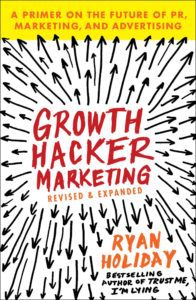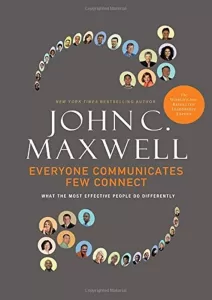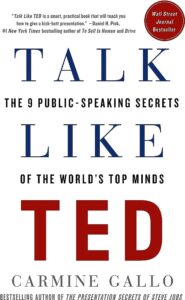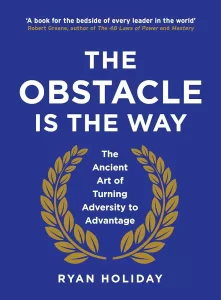Book Review: “Growth Hacker Marketing”
Book: Growth Hacker Marketing by Ryan Holiday
Reviewer: Bobby Powers
My Thoughts: 9 of 10
After rising to become director of marketing at American Apparel, Holiday was on top of the marketing world. Then one day he saw a news headline that made him pause. The story said traditional marketing roles like Holiday's were under assault by a new player in the game: growth hackers. Holiday investigated this new craft and eventually mastered it. In this book, he tells how he's used the growth hacker mindset to acquire customers, sell books, and spread viral content. Growth Hacker Marketing is a quick read loaded with practical ideas. If you wonder how to sell your product without a big ad budget, this book is for you.
Selected Quotes and Ideas from the Book
Growth Hacking
- “A growth hacker is someone who has thrown out the playbook of traditional marketing and replaced it with only what is testable, trackable, and scalable. Their tools are e-mails, pay-per-click ads, blogs, and platform APIs instead of commercials, publicity, and money. While their marketing brethren chase vague notions like ‘branding’ and ‘mind share,’ growth hackers relentlessly pursue users and growth—and when they do it right, those users beget more users, who beget more users.”
- “Growth hacking is really a mindset rather than a tool kit...Once you break out of the shackles of antiquated notions of what is or isn’t marketing, the whole field becomes cheaper, easier, and much more scalable. The game changes forever. It get exponentially better.”
- “The end goal of every growth hacker is to build a self-perpetuating marketing machine that reaches millions by itself.” -Aaron Ginn
- “Marketing has always been about the same thing—who your customers are and where they are.” -Noah Kagan
Product Market Fit (PMF)
- “Product Market Fit is the achievement of a state in which a product and its customers are in perfect sync with one another. This is the holy grail for every growth hacker. Growth hackers believe that products—even whole businesses and business models—can and should be changed until they are primed to generate explosive reactions from the first people who see them. In other words, the best marketing decision you can make is to have a product or business that fulfills a real and compelling need for a real and defined group of people—no matter how much tweaking and refining this takes.”
- “Once we stop thinking of the products we market as static--that our job as marketers is to simply work with what we’ve got instead of working on and improving what we’ve got--the whole game changes.”
- “Isolating who your customers are, figuring out their needs, designing a product that will blow their minds—these are marketing decisions, not just development and design choices.”
- “People [who are] thinking about things other than making the best product, never make the best product.” -Phil Libin
- “The race has changed. The prize and spoils no longer go to the person who makes it to market first. They go to the person who makes it to Product Market Fit first.”
Questions to Ask Yourself About Your Product/Service
- “What is the one thing that makes this product unique and interesting?”
- “Who is this product for?”
- “Why should they use it?”
- “Why do I use it?”
- “Have you actually made it easy for [customers] to spread your product?”
Going Viral
- “Virality isn’t luck. It’s not magic. And it’s not random. There’s a science behind why people talk and share. A recipe. A formula, even.” -Jonah Berger
- “Only a specific type of product or business or piece of content will go viral--it not only has to be worth spreading, it has to provoke a desire in people to spread it.”
- “Look, virility at its core is asking someone to spend their social capital recommending or linking or posting about you for free...The best way to get people to do this enormous favor for you? Make it seem like it isn’t a favor. Make it the kind of thing that is worth spreading and, of course, conducive to spreading.”
- “Ideally, growth hackers look for a viral coefficient (or ‘K factor’) greater than one. The term ‘K factor’ is typically used in medicine to describe the contagion of disease. In the start-up world, the viral coefficient measures the number of new users that each existing user is able to convert. If each new user is bringing in, on average, more than one user, then the K factor is greater than one and your start-up is going viral.”
Metrics and Retention
- “Remember: metrics are somewhat relative depending on what you are trying to accomplish. Figure out what your most important metric for growth is and focus on that. Don’t listen to or judge yourself on other people.”
- “Retention trumps acquisition.” -Bronson Taylor
- “According to Bain & Company, a 5 percent increase in customer retention can mean a 30 percent increase in profitability for the company. And according to Market Metrics, the probability of selling to an existing customer is 60 to 70 percent, while to a new prospect it’s just 5 to 20 percent.”
- “Vanity metrics are the metrics that feel important but are ultimately superficial or, worse, deceptive. For instance, monitoring traffic to your website (congratulating yourself that it is increasing) while ignoring conversion rate, bounce rate, time on site, and so forth, would be falling prey to a vanity metric.”
Think you’d like this book?
Other books you may enjoy:
- Perennial Seller by Ryan Holiday
- Hacking Growth by Sean Ellis and Morgan Brown
- Growth Hacking by Raymond Fong and Chad Ridderson
Other notable books by the author:
Want to become a stronger leader?
Sign up to get my exclusive
10-page guide for leaders and learners.







